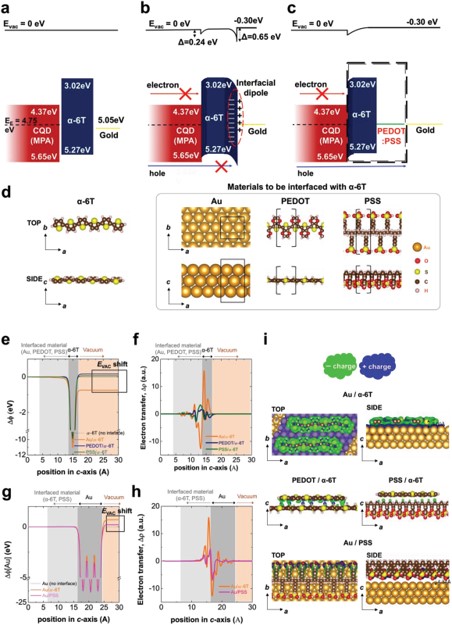Suppressing Interfacial Dipoles to Minimize Open-Circuit Voltage Loss in Quantum Dot Photovoltaics
슈퍼관리자
2021-05-21
Suppressing Interfacial Dipoles to Minimize Open-Circuit Voltage Loss in Quantum Dot Photovoltaics
-
Authors :
H Lim, D Kim, MJ Choi, EH Sargent, YS Jung, JY Kim
-
Journal :
Advanced Energy Materials
-
Vol :
9
-
Page :
1901938
-
Year :
2019

Abstract
Quantum‐dot (QD) photovoltaics (PVs) offer promise as energy‐conversion devices; however, their open‐circuit‐voltage (VOC) deficit is excessively large. Previous work has identified factors related to the QD active layer that contribute to VOC loss, including sub‐bandgap trap states and polydispersity in QD films. This work focuses instead on layer interfaces, and reveals a critical source of VOC loss: electron leakage at the QD/hole‐transport layer (HTL) interface. Although large‐bandgap organic materials in HTL are potentially suited to minimizing leakage current, dipoles that form at an organic/metal interface impede control over optimal band alignments. To overcome the challenge, a bilayer HTL configuration, which consists of semiconducting alpha‐sexithiophene (α‐6T) and metallic poly(3,4‐ethylenedioxythiphene) polystyrene sulfonate (PEDOT:PSS), is introduced. The introduction of the PEDOT:PSS layer between α‐6T and Au electrode suppresses the formation of undesired interfacial dipoles and a Schottky barrier for holes, and the bilayer HTL provides a high electron barrier of 1.35 eV. Using bilayer HTLs enhances the VOC by 74 mV without compromising the JSC compared to conventional MoO3 control devices, leading to a best power conversion efficiency of 9.2% (>40% improvement relative to relevant controls). Wider applicability of the bilayer strategy is demonstrated by a similar structure based on shallow lowest‐unoccupied‐molecular‐orbital (LUMO) levels.















